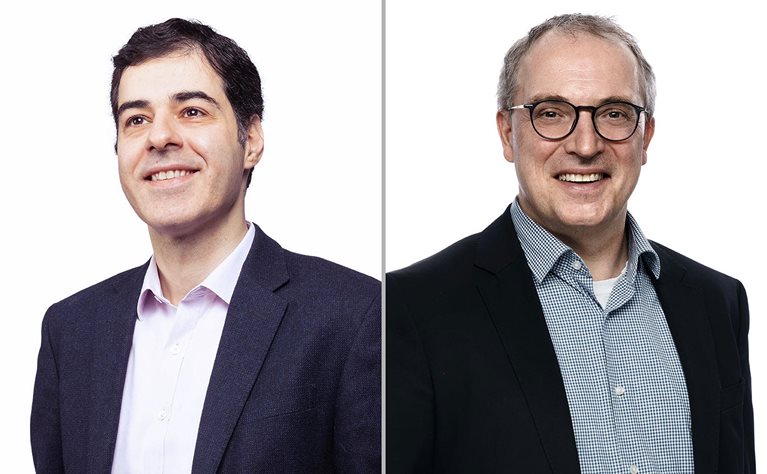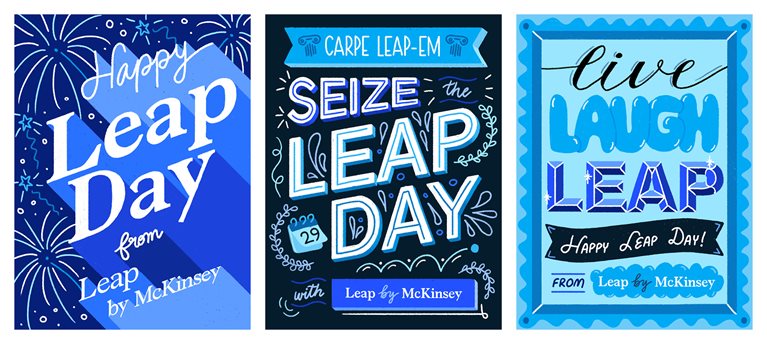Today is Leap Day, a fitting occasion for a look at our practice devoted to new business-building, Leap by McKinsey.
Since its 2018 inception, Leap has built over 600 new businesses, including 20 “unicorns” or companies valued at more than $1 billion, and two decacorns valued at more than $10 billion. In 2022 alone, Leap helped clients build more than 190 new businesses, creating more than 20,000 jobs and $140 billion in value. And they’re just getting started.
CEOs understand that now is the time to leverage new technologies as a source of competitive advantage. Generative AI alone, for example, is projected to power at least 75 percent of new businesses built this year.

McKinsey is uniquely suited to help leaders seize the advantage these technologies offer. We are partnering with clients now to help them start generating compounding growth through the launch of new businesses.
To learn more about Leap, and why every day is Leap day at McKinsey, we spoke with the practice’s global co-leaders, senior partners Ari Libarikian and Paul Jenkins.
Talk to us about this moment. Why should CEOs care about building new businesses?
Ari: Companies that are successful over multiple decades are always creating new sources of revenue: new products, new services, new businesses. In fact, our research shows it's a requirement for long-term success (over multiple decades). So, the question is not whether a company should build new businesses; it’s which ones to build and how?
Right now, we’re in a period of uncertainty. That’s not new. What is new is the way CEOs are behaving. This time around, as compared to the global financial crisis or the dot com cycle, they're not only focused on near term resilience and cash, they’re also in parallel looking around the corner and investing in medium- and long-term growth opportunities like business building.
What role is technology playing in all this?
Paul: Technology is making it easier to build than ever before. There are two characteristics enabling this: connectivity and speed.
If you’re a bank, for example, that wants to also become an insurer, connecting new insurance capabilities to your existing business is far more feasible than it has ever been. Or say you’re a utility company and you want to offer home retrofit services (including installation and financing), you can easily and digitally integrate with partners do provide customers with a true “one-stop-shop.”
Cloud components, generative AI, and other advances are effectively collapsing time. Committed and innovative leaders can stand up a new idea so much quicker than even two or three years ago.
The barrier to entry is just so much lower—and the effort required to build—is much lower than it used to be.

Leap by McKinsey
How is McKinsey helping clients build new businesses?
Ari: In Leap, all we do is work with clients to help them imagine, launch, and scale new businesses. And when we help clients, we help them soup to nuts.
We start with the initial ideas— What's the strategy? How will you drive growth? What are the business building ideas?—and we help prioritize those ideas and select what we’ll pursue. We then help clients take the next step: blueprinting, building detailed business plans, creating the product MVP.
Then it’s into the build. We help hire the team, build the technology, roll-out the product, drive customer engagement, gather feedback, improve it, and raise funding. And then we scale, running sales and marketing war rooms that help drive topline growth and value creation.
Paul: That’s exactly right. We’re involved at every step in a very hands-on way. That includes the last phase, which is: "You now have built and launched a business. How do you now rapidly scale this so that it can reach its full potential?”
We have a heavy focus on being along for the ride with our client helping them hire their long-term team and people, helping upskill and coach people. By the time we leave the building the client has something new and enduring: not just an at-scale business but a team and a set of capabilities to take it forward.
Can you give an example?
Ari: We worked with a power tools company to help them transition from a physical product to a digital product through a software-as-a-service business.
The new business was a very different business. It had a different financial profile, different margins, and so on. It also required figuring out the types of skills needed across product development, design, digital, and sales.
We deployed a team up front that played these various roles on day one, and then that team also helped hire the people who would work for the client in those roles permanently.
By the time we were done, the client had a business that was well on its way toward its business goal—and it also had a team, a general manager, sales people, and tech people that could take it forward and ensure it endures.
We describe ourselves at impact partners to our clients. What does that mean in this context?
Paul: Nobody ever created a unicorn in two or three months. In order to really drive success, you need to be together, working as partners, for at least a year or 18 months. So there’s a time element to it and a level of relationship building and personal investment required to create success.
In addition, the nature of the relationship is a partnership; you really are sitting at the same table, as almost joint-venture partners. We've identified a big opportunity together. We're going to capture it together. We're going to do it over a meaningful length of time. We will share in the benefits of our new venture. And we're going to be really challenging each other to get the best out of this all the way along that journey.
Ari: When we help clients build businesses, we do this very much as partners. We are successful if our client is successful. And so we structure our partnership in a way where we are tracking impact month to month over the course of, as Paul points out, the typically couple of years of this relationship.
Everything we do is pointed in the direction of helping our client build the business and build the capability for the long term. So that's what we measure ourselves against, that's what we want to get measured on to be successful partners to our clients in business building.

What would you tell a CEO who’s thinking about building a new business but doesn’t know where to start?
Paul: The best new businesses compete with unfair advantages in high growth areas of the economy. So put simply I would advise the CEO to begin thinking about a new business by looking at the assets and distinctive capabilities they have to see if they can deploy them to capture the business building opportunity associated with a mega trend.
I’d also advise them to prepare to spend real time on this endeavor. You don't find chairs or founders of new ventures who don't spend significant time on that new venture. They also need to think about talent and diversity in the business building team. When we look across all the businesses that we've built, the single biggest driver of success is assembling the right team.
Finally, I'd advise them to recognize that you need to set this up organizationally with the right conditions for speed. You need to make sure that you're able to exploit all of the advantages that come from corporate—and at the same time moving at the speed of a startup.
You’re both passionate about this. In a few words, what inspires you about the work?
Ari: In Leap, we've helped create 60,000 new jobs in the last few years globally. These are new jobs that didn't exist in new businesses that didn't exist. So what excites me is being able to help our clients build and create something out of nothing almost—and have that be a basis for success for them over the long term.
Paul: The jobs created by those new businesses are doing some good for the world.
That excites me. And these engagements are just fun—the pace, the energy. There's always a new challenge, a new opportunity to go after. Walking into a building where we're creating a new venture, it just feels alive. I just get a real kick out of being in that environment.